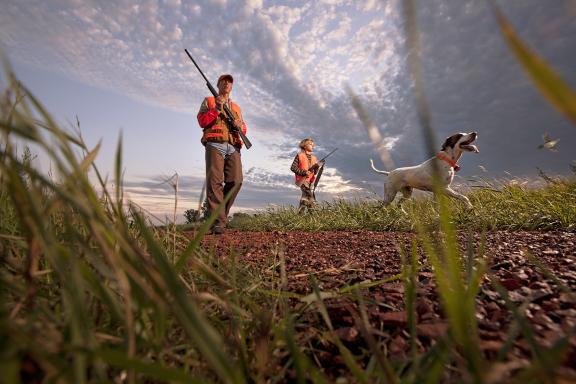2024 Game Numbers Strong Statewide
North Dakota Game and Fish have released several encouraging reports that indicate populations of wild game are increasing or stable statewide.
The survey numbers were expected to be favorable after a very mild 2023-2024 winter where survival rates and carryover populations are typically stronger.
Spring precipitation has improved habitat, wetland indexes and created better nesting conditions than seen in previous years. The latest drought monitor report shows only 2.2% of the state is classified as areas of drought, compared to late summer of 2023 when over half the state was abnormally dry and over 20% of the state was classified as in severe or extreme drought. Healthy population numbers and nesting conditions typically create a better experience for hunters in the fall.
Pheasants
The 2024 spring pheasant crowing count survey indicated the pheasant population in North Dakota is up 37% statewide over 2023. Much of the increase is the result of positive weather patterns for wildlife and improved habitat conditions on the northern plains.
Increasing the pheasant population in North Dakota involves a multifaceted approach centered on habitat improvement and conservation that allow game to take advantage of positive weather patterns to thrive. The North Dakota Game and Fish Department (NDGFD) collaborates with landowners, conservation groups, and government agencies to restore and enhance habitats critical for pheasant survival. NDGF initiatives such as the Working Lands Program, Wildlife Food PLOTS Seed Program work along with Federal programs such as the Conservation Reserve Program (CRP) that encourage landowners to convert agricultural lands into grasslands, providing essential nesting and brood-rearing cover for pheasants. State and federal partnerships aim to create a more supportive environment for pheasants to thrive.
Waterfowl
The 2024 breeding duck survey numbers in North Dakota slid slightly in 2024, thought the population remains 17% above the long-term average and is the 30th highest across the seventy-seven-year record. Though the number is down in 2024, rains in May/June have improved wetland and habitat conditions and should provide ample nesting opportunities for breeding ducks.
Canadian geese are abundant during migration and nesting seasons in North Dakota. Agricultural depredation issues caused by the strong goose population have allowed NDGF to provide additional hunting opportunities, including an early take/management season with extra days in the eastern part of the state. Canada goose hunting is divided into three zones see https://gf.nd.gov/hunting/canada-geese for more details. For nonresidents, the early season days do not count against the 14-day regular season waterfowl license.
Managing waterfowl involves comprehensive habitat conservation and management strategies. The state's numerous wetlands, lakes, and rivers are crucial stopover and breeding sites for migratory waterfowl along the Central Flyway. To support these populations, the North Dakota Game and Fish Department (NDGFD) partners with federal agencies, conservation organizations, and private landowners to protect and restore wetland habitats. Programs like the Wetlands Reserve Program (WRP) and initiatives under the North American Wetlands Conservation Act (NAWCA) provide funding and resources to enhance wetland quality and connectivity.
Big Game
North Dakota also offers several opportunities for big game hunting. Though the opportunities are limited, there are “over the counter” deer archery licenses available. Mild winter weather has also benefited the deer populations. The 2024 mule deer survey shows a small increase in population, a departure from the negative trend of previous years. In this area, a small increase or unchanged population is encouraging and may signal the beginning of an upward trend in population. NDGF biologists are encouraged by the count and believe last winter’s mild conditions could result in higher fawn production this summer, leading to an increased population in 2025. North Dakota conduct’s winter aerial surveys to estimate deer population and establish a license availability.



